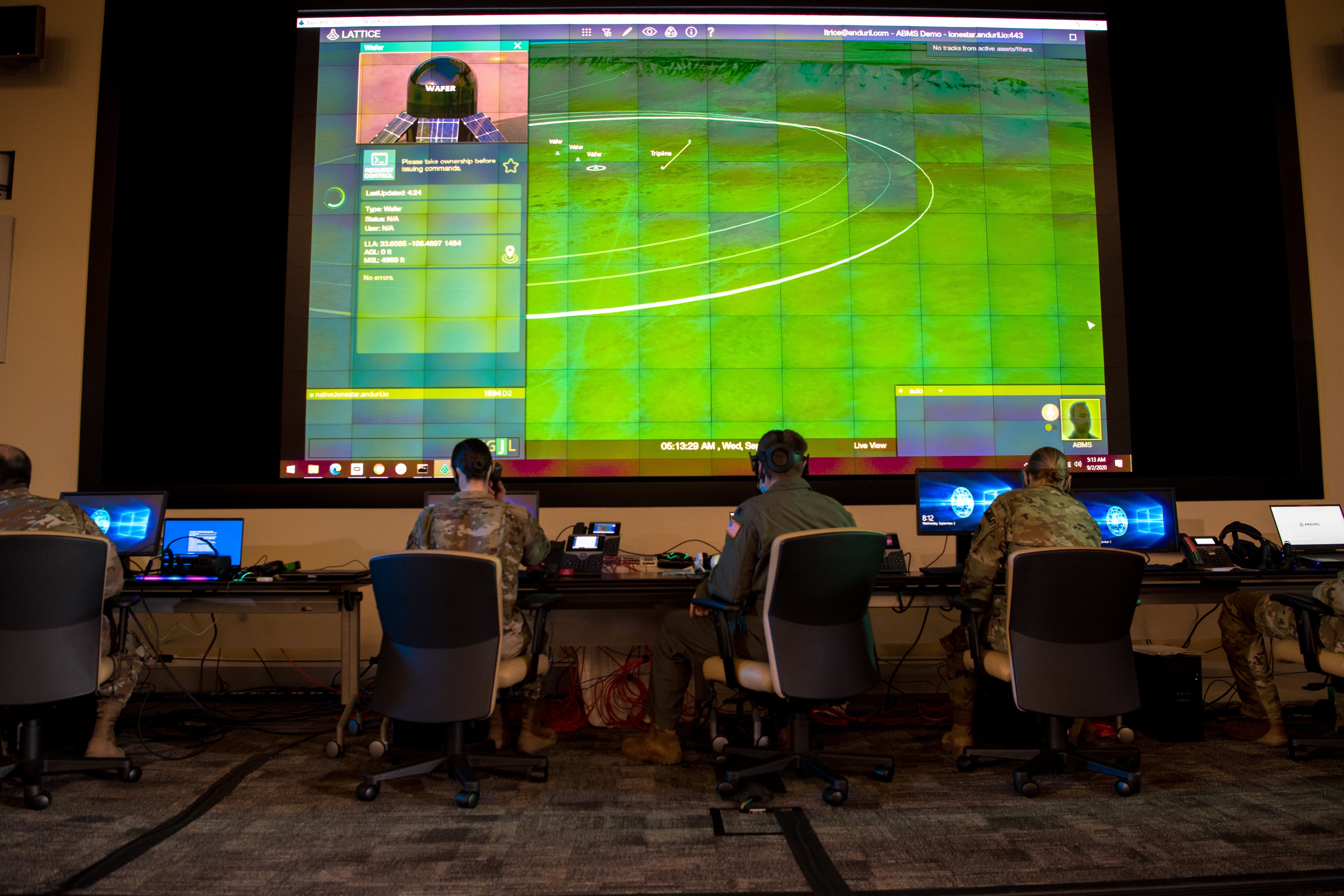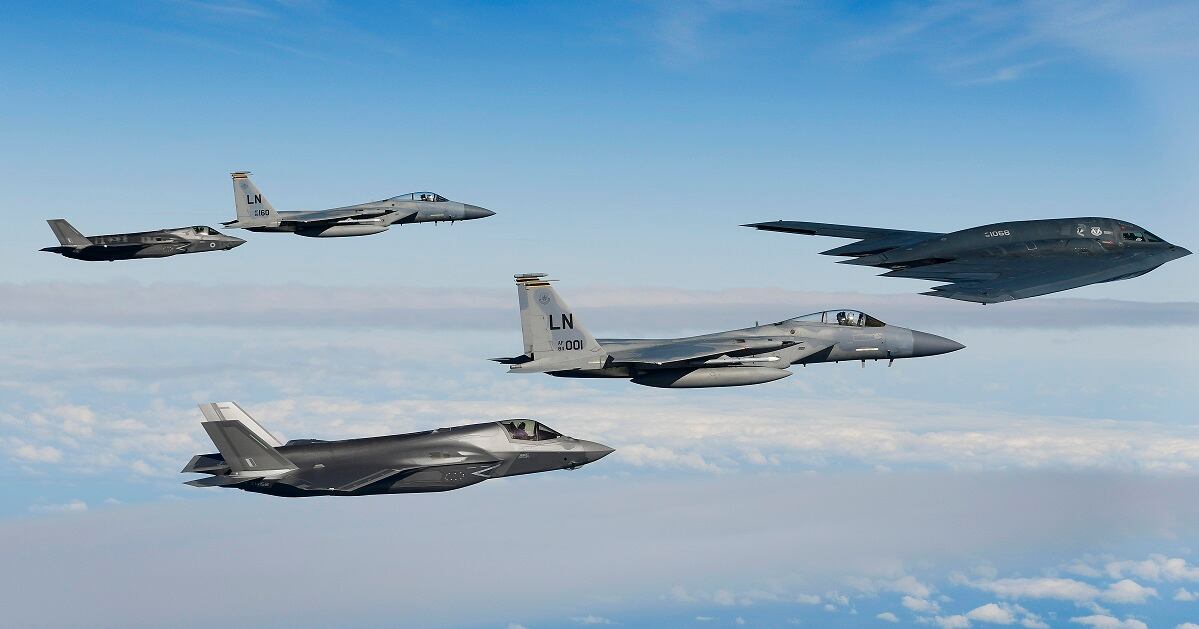WASHINGTON — As the Air Force works on the new architecture and way of war dubbed Joint All-Domain Command and Control, leaders are beginning to think about how this networked system must be protected from digital threats.
JADC2 is the ambitious undertaking by the Department of Defense to connect all sensors on the battlefield to warfighters, enabling faster — in some cases, real-time — transfer of data, information, intelligence and communications across platforms and services. It is part of a more holistic joint approach for a new way of war under the umbrella of Joint All-Domain Operations.
The Air Force has been selected to lead the JADC2 effort for all the services as part of Joint All-Domain Operations. Their solution to do this is ABMS, or Advanced Battle Management System.
Officials surmise that in a future conflict against a technologically superior adversary such as Russia or China, information must travel faster and the services must be more integrated.
RELATED

Given the high reliance on networks to enable this architecture to work, top Air Force officials have begun discussing the prospect of defending it.
“The only way we’re going to be able to really conduct JADC2 is through a defended, resilient, fully capable fabric, warfighting communication fabric,” Brig. Gen. Bradley Pyburn, deputy commander of 16th Air Force/Air Forces Cyber, the Air Force’s information warfare command, said Sept. 15th during a virtual event hosted by AFCEA’s Alamo chapter. “We’re going to have to not just enable that and design it and operate it, we’re going to have to defend it because the adversary is going to try to take that away from us.”
The foundation of ABMS is the data that is brought in and stored in the cloud.
“[The] things that we’ve seen as enormous steps forward for us have been CloudOne, PlatformOne and RepoOne. Those areas are really allowing us to be able to consolidate our data, run analytics, but also enable DevSecOps,” Lt. Gen. Timothy Haugh, commander of 16th Air Force said Sept. 15 as part of the Virtual Air, Space and Cyber Conference.
CloudOne is a multi-cloud environment. PlatformOne is an enterprise solution that is a software development platform host a range of components. RepoOne is a central repository for the source code to create containers.
RELATED

“In competition, we’ve got to be able to move data. In some cases that’s being able to secure our networks … Being able to get our data into those clouds is a foundational component of our strategy for JADC2 and ABMS,” Haugh said Sept. 9 as part of the virtual Billington Cybersecurity Summit. “We want to be drawing all of our data that our Air Force is using whether that’s business systems or operational data, we want that inside our fence line, ideally inside of CloudONE so that we can increasingly move to zero trust in a much more accelerated fashion.”
Haugh also noted that as the cyber component for the Air Force, 16th Air Force is tied to JADC2 helping underpin the ability to move data, adding “we’re accelerating some of our cybersecurity activities and being able to move out at a much more aggressive way to change how we’re approaching technology in this information environment.”
Pyburn, in a cryptic fashion due in large part to the sensitivity, explained that there was a cyber narrative signed recently by top Air Force leadership. The narrative acknowledges that JADC2 is underpinned by a defended and resilient network.
“There’s also broad acknowledgement,” he said, “that as an Air and Space Force, there are unique platforms and accesses to capabilities that we have that no one else has.”
“Just imagine every platform has apertures, every aperture can collect and receive and generate signals and think about the opportunities there and how we will … leverage CYBERCOM authorities or other combatant command authorities where appropriate is pretty exciting,” he continued.
Recent congressional action has authorized defensive cyber personnel to operate outside U.S. networks, a development that officials claim creates greater cyber defense. Offensive teams have always had the authority to conduct operations outside U.S. networks, but now, through what U.S. Cyber Command calls “hunt forward” missions, cyber protection teams, at the invitation of host nations, can assist them in defensive cyber on their own networks. This allows Cyber Command to get a sense of the types of malware enemies are using and the types of operations they might be planning against U.S. networks allowing them a leg up on adversaries.
On the defensive side, the Air Force had been readying to officially formalize what they are calling Mission Defense Teams. These are specialized defensive cyber teams organic to the Air Force separate from the cyber mission force that will protect critical Air Force missions and installations.
It is unclear what specific teams or authorities Pyburn was talking about, or a combination of them.
Mark Pomerleau is a reporter for C4ISRNET, covering information warfare and cyberspace.








